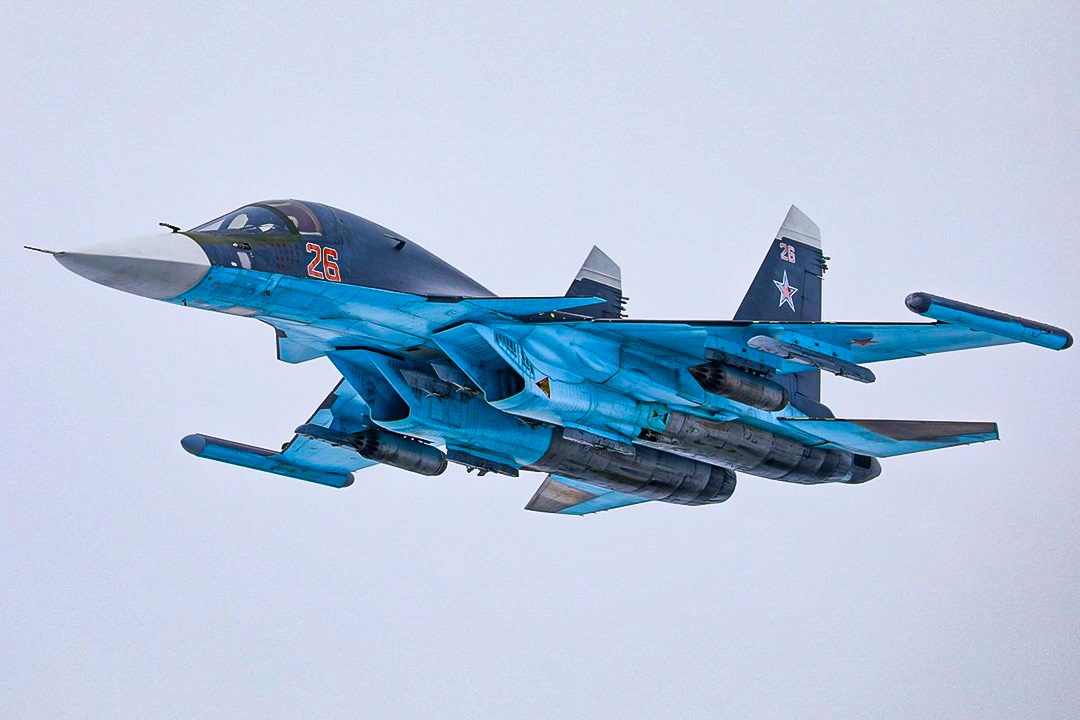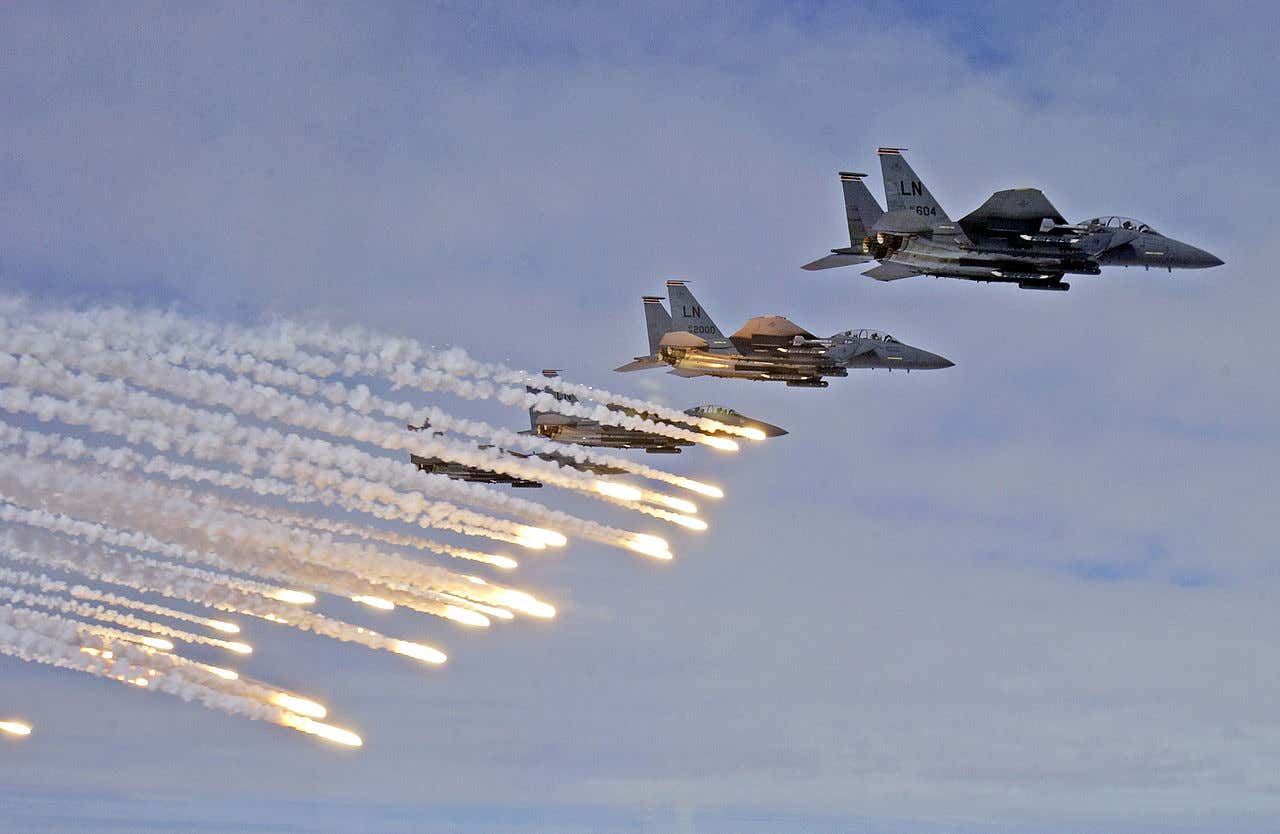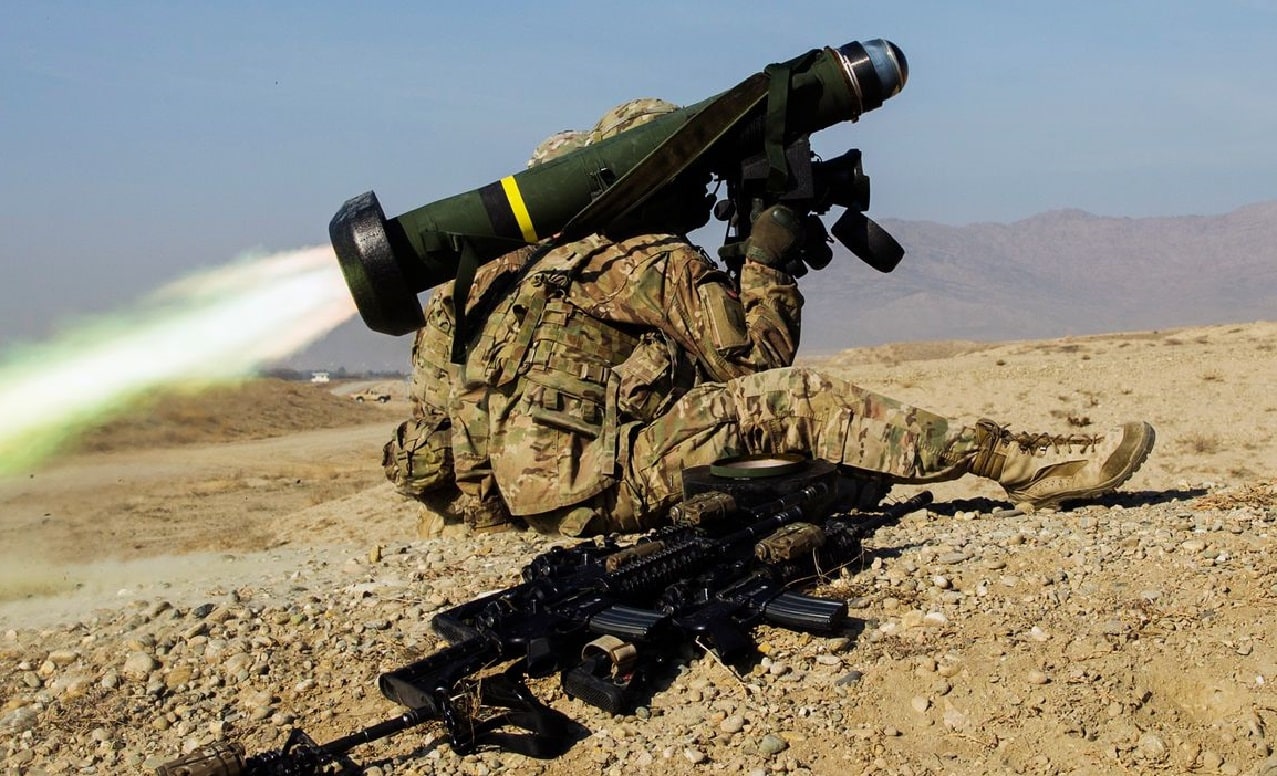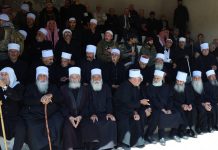While Russia has intensified its air raids, the Ukrainian missiles have reportedly managed to down some of its best fighter jets including the Sukhoi Su-35E Flankers and the heavy-duty Su-34.
The Russian Su-34 fighter-bomber was recently caught on video firing a large number of heat traps over the Donetsk region in Eastern Ukraine where it has intensified its airstrikes, local media reported and share links on social media.
According to the reports, a video of a Russian Su-34 fighter-bomber passing over the Donetsk region surfaced on the internet. However, not the appearance of the combat aircraft, but the enormous shooting of deceptive thermal targets by it has caught the attention of onlookers and netizens.
The video has come shortly after Ukrainian authorities posted another video revealing the shooting down of a Sukhoi Su-34 fighter jet by Ukraine’s anti-aircraft missile over Kharkiv. A few days ago, Ukraine’s General Staff of the Armed Forces shared a video on Facebook of a massive burning object falling from the sky, claiming it to be a Russian Su-34.
Low-flying Russian Su-34 bomber reportedly flying over the Donbas. https://t.co/VzyHldvMVmhttps://t.co/ahpTmiIdfV pic.twitter.com/Us9I89RACL
— Rob Lee (@RALee85) April 6, 2022
The EurAsian Times had reported at the beginning of the invasion that Sukhoi Su-34 strike aircraft were sent by Russia to bolster its military offensive against Ukraine. At the time, online videos had shown up to seven SU-34 fighter-bombers flying over Kharkiv.
The Su-34 is Russia’s newest fighter jet, costing $36 million per unit according to Russian state media; however, it has fallen far short of its promise during the Ukraine conflict. Ukraine’s military forces claim to have shot down a number of Su-34s, including one on March 27. The claims could not be verified independently.

Due to the large-scale supply of air defense equipment to the Armed Forces of Ukraine, Russian aviation is actively using heat traps in Ukraine and especially in the airspace of the Donbass republic, according to local media reports.
The anti-aircraft missiles pose a risk to Russian pilots flying at low altitudes. The Man-Portable Air defense systems (MANPADS) like Javelins, Stingers, NLAWs, Starstreak that have been widely supplied to Ukraine have wreaked havoc on the Russian military. Ukraine also employs powerful air defense systems like S-300 and S-125 Neva that have downed various Russian fighters.
The Russian aircraft, at threat from ground-based surface-to-air missiles, are forced to fly at lower altitudes for military operations where they become easy targets for the ‘heat seeking’ MANPADS supplied by NATO. This is where the counter-measures like flares/ heat traps come in as blasting thermal targets reduces the success of anti-aircraft missiles.
The last time when Russia was in news for using heat traps was during President Vladimir Putin’s visit to Syria in 2017 onboard a Tu-124PU. The escorting Sukhoi Su-30SM tightened close to Russian President Putin’s aircraft while they descended to form heat traps that would protect the aircraft carrying Putin from any potential MANPAD attack. The video has been made unavailable on YouTube.

How Do Heat Traps Work?
Heat traps also called decoy flares are very hot, burning objects that are released from an aircraft to prevent an incoming missile from striking it, thus acting as a decoy.
The majority of decoy flares are constructed of specific materials that instantly ignite when they come into contact with air. These decoy flares, also known as pyrophoric flares because they burn up as soon as they ‘touch’ the air, perform brilliantly to prevent a heat-seeking missile from hitting its (intended) target.
These are countermeasures that, when fired, burn at high temperatures, deceiving the heat-seeking missile as to where its target is actually located. After firing decoy flares, the pilot could pull the aircraft away from the point where the flares were launched at a steep angle. In order to regulate or minimize the plane’s thermal signature, the engine power is limited.
Heat-seeking missiles identify infrared rays emitted by the moving target. When heat traps are released, the heat-seeking missile gets confused about the exact location of the target. The heat traps are, thus, a very useful measure to safeguard the pilot onboard lethal and expensive fighter jets.
Helicopters and ground attack aircraft will practice firing flares when entering high-risk areas of their flight envelope and mission where shoulder-fired surface-to-air missiles may be present, even if they are not in actual combat. When an adversary is within the firing envelope of their short-range missiles, fighters will also fire flares during training dogfights.

There have been reports of several MANPADS and anti-aircraft missiles downing Russian aircraft, including the first-ever shooting down of the Su-35 ever since it entered combat in 2016. The aircraft was reportedly shot down by the S-125 air defense system.
Even as the NATO countries have refused to provide fighter jets and bombers to Ukraine for fear of an unwarranted escalation, they have generously supplied MANPADS and air defense systems that have wreaked havoc on Russian fighters and military helicopters
- Contact the author at sakshi.tiwari9555@gmail.com
- Follow EurAsian Times on Google News




